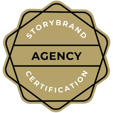How Do You Design Fantastic Sales Meetings That Don’t Waste Sellers’ Time?
by Shawn Karol Sandy, on May 16, 2021 3:44:00 PM
“Don’t you just LOVE meetings!”
Said probably no one ever.
Sales meetings, in particular, were usually met with an eye roll so hard from me that I could examine the back of my brain. Time after time, whether they were weekly, monthly, or scheduled on a whim, sales meetings devolved into sessions of waterboarding by reports and sales figures to the point where everyone is numb and tuned out.
Torture. Yes, I just compared meetings to a hideous form of torture.
They should not be torturous, boring, and uninspired lectures where your boss reads from a spreadsheet. And they don’t have to be.
What do you want to get out of a sales meeting?
An update on everyone’s monthly numbers?
That can be done with a report from the CRM.
A change in policies or procedures?
Send an email with bullet points.
Training for a new software feature?
Send a link to the webinar.
An opportunity for everyone to advance their skills and increase their results?
THAT’S a reason to have a sales meeting. Or, I like Amy O’Connor’s suggestion from her article, 5 Ideas for Revolutionizing Your Weekly Sales Meetings, where she describes them as “Sales Rallies.”
To keep those eye-rolls in check, why not create dynamic, energetic, and *shocker* PRODUCTIVE sales meetings that truly help sellers move the business forward and advance their skills!
Here are 3 Steps to Create Sales Meetings that Produce Results:
1. Keep it short
Really short. Like 15 to 20 minutes. If this meeting is an excuse for Bob or Diane to sit down with another cup of coffee and a donut and catch up on sports scores from the weekend, then your meeting is missing the mark on productivity and participation.
Use an agenda or formula. Keep the purpose and focus tight on your meetings. Can you pick just 3 things to run through? Here’s an example:
- Win or highlight for each player
- Challenge or opportunity that needs input or insights
- Something new to take away
This takes practice and diligence. You need to make sure people move quickly and succinctly through each point. This helps keep the energy up and everyone feels like they have a chance to grab the spotlight. Keep a timer, perhaps, and stick to it. One minute or less should give everyone ample time to share something. This is not the time or place to hear about Luann’s grandchild’s kindergarten graduation. Take that “offline.”
Let everyone know you’re serious about keeping true to the brevity and focus of the meetings. You will have to stop some people—maybe several times if you’ve got a chatterbox who loves to tell detailed stories. Do it to maintain the integrity of the meeting. If someone brings up a challenge that needs further discussion, make a point to either create a separate meeting, find answers, or let the group know how you’ll follow up.
Don’t get hung up on OPERATIONS. That’s the wrong “ops” to discuss here.
Sales meetings are about advancing OPPORTUNITIES. Dragging out all the operations issues is messy and can often be a distraction from the real sales issues.
2. Keep the energy level high
One way to do this is to have a “stand up” meeting. Most everyone should be able to stand up for 15 minutes. Sitting down helps us “linger” whereas standing requires the active engagement of posture and balance. We’re more inclined to move things along when we’re not sitting on our butts. True story.
Standing up makes it a lot harder to disguise distraction too. We’ve all done the “hide your phone in your lap under the table and text or scroll emails while someone else is talking” thing at meetings. No table, no hiding. You could even go so far as to ban phones from the meetings. Better probably to make the meetings so engaging that no one wants to or has the time to play Candy Crush during these weekly sales rallies. Put your phone down, Luann. No one wants to see those pictures.
Another way to keep the energy up is to avoid using PowerPoint presentations or lengthy reports. Your meeting should be so focused that you don’t need a visual map to follow it. If there is a key takeaway from the learning segment, a simple one-page handout will work but lots of paper is distracting.
Try playing music as your team enters. High energy music creates a high-energy atmosphere. It’s also a good cue to get your team to the meeting. You could rotate everyone’s theme song each week. It’s a good way to get to know someone’s personality better. Barb may surprise you by choosing Metallica’s Enter Sandman as her theme song (it’s an oldie but pretty badass). What a great way to see another side of people.
Lastly, schedule your meetings at an odd time. By odd, I mean, instead of 8:30 am, try setting the meeting start time at 8:27 am. I’ve done this with dozens of groups and you’d be amazed who works to show up early when the meeting starts at 27 minutes past the hour vs who drags in at 33 or 35 minutes past the hour if the meeting was scheduled to start at 8:30. It’s another way to let them know you’re serious about time and maintaining the integrity and focus of the meeting.
3. Build-in participation
Instead of listening to managers or directors drone on the entire time, build more engagement by enlisting a team member each meeting to highlight a new tool they’re using and prepare a Q/A session about it. Or, bring a book, blog, or podcast to the table that everyone can learn from and that’s relevant to your industry, your market, your buyers, your performance, individual growth, et cetera.
And when you’re celebrating successes, be sure to have your sellers articulate what went right and why. If they’re doing something different and it’s working, have them expand on it next meeting so that others can field test it and have the opportunity to improve their results.
So often the competitive nature of selling creates an environment where sellers are holding tight to their trade secrets and don’t share or communicate best practices or successes. This will take a shift and perhaps time to encourage more trust, but sharing to encourage everyone’s success creates a transparent team that strives to create more top performers instead of one “king/queen of the hill.”
Create a new paradigm for success by leveraging the group experience and collective creativity to help each other move opportunities forward when stuck. Have sellers speak up when they have a customer that won’t respond, an opportunity that’s stalled, or an obstacle they haven’t figured out how to overcome. The collective brainpower of your team can help you power through and advance these sales!
These are SO MUCH MORE THAN UPDATES! You can get an update in an email. You should be able to know what’s going to close by looking at your pipelines. Sales meetings, or rallies, call them whatever you like – are meant to inspire, motivate and MOVE your team members. For Sales Directors or Business Owners, these are opportunities to see how your sellers operate, whose “in it to win it” with their attitude and mindset, and where you need to bring in specific training and one on one coaching.
SALES REPS: you have a responsibility to make these meetings successful too! If your meetings are a time suck or just suck your time, SPEAK UP and offer up some ideas for ways to improve them so the time you spend is helping you close deals or advance sales.
Sales meetings aren’t a punishment for missing quota, training isn’t an “annual event” and 1:1 meetings shouldn’t be for discipline or reprimand. These are opportunities for thoughtful progression and development of your team members.
Done well, sales meetings are a part of your organization’s fabric of learning which advances the entire organization. Don’t make yours a snooze!

.webp?width=12693&height=4513&name=Sauce%20Logo%20Dark%20Ht%20(1).webp)

.webp?width=180&height=64&name=Sauce%20Logo%20Dark%20Ht%20(1).webp)











